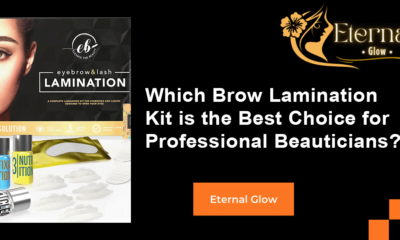Treatments
What sets Schmidt’s apart from Native Deodorant?
About Schmidt’s and Native Deodorants
Are you looking for a natural deodorant that is effective and free from harmful chemicals? In this article, we will compare two popular natural deodorant brands – Schmidt’s and Native – and explore what sets them apart from each other. We will delve into their ingredients, scents, packaging, pricing, and overall performance to help you make an informed decision on which brand might be the best fit for your needs.
What ingredients are used in Schmidt’s and Native deodorants?
Schmidt’s is known for using plant-based ingredients such as shea butter, baking soda, and essential oils in their deodorants. These ingredients work together to neutralize odor and absorb moisture, keeping you feeling fresh throughout the day. On the other hand, Native deodorants contain ingredients like coconut oil, shea butter, and baking soda, with a focus on simple, clean formulas that are gentle on the skin.
While both brands steer clear of harsh chemicals like aluminum, parabens, and phthalates, some individuals may have sensitivities to specific ingredients. It is essential to check the ingredient list carefully before making a purchase to ensure that the deodorant aligns with your skin type and sensitivities.
What scents are available in Schmidt’s and Native deodorants?
Schmidt’s offers a wide range of unique scents, including Rose + Vanilla, Lavender + Sage, and Charcoal + Magnesium, catering to different preferences. The scents are derived from natural essential oils and extracts, providing a pleasant aroma without the use of synthetic fragrances.
On the other hand, Native offers a selection of classic scents like Coconut & Vanilla, Cucumber & Mint, and Eucalyptus & Mint. These scents are subtle yet refreshing, perfect for individuals who prefer a more subdued fragrance. Whether you prefer floral, fruity, or fresh scents, both brands have a variety of options to choose from.
How do Schmidt’s and Native deodorants differ in packaging?
Schmidt’s deodorants come in eco-friendly packaging, with options for both stick and jar formats. The stick deodorants are housed in recyclable containers, while the jar deodorants are packaged in glass containers that can be reused or recycled. This commitment to sustainability sets Schmidt’s apart in the natural deodorant market.
Native deodorants, on the other hand, are packaged in plastic containers that are 100% recyclable. While the packaging is not as eco-friendly as Schmidt’s, Native strives to minimize waste and environmental impact by using recyclable materials and reducing plastic usage where possible.
What is the price range of Schmidt’s and Native deodorants?
Schmidt’s deodorants are priced slightly higher than Native deodorants, reflecting the brand’s commitment to using high-quality, natural ingredients. The price range varies depending on the size and format of the deodorant, with options for single purchases or bulk packs for added savings.
Native deodorants are more affordable than Schmidt’s, making them an accessible choice for individuals looking for a budget-friendly natural deodorant option. Despite the lower price point, Native does not compromise on quality, offering effective odor protection and long-lasting freshness.
How effective are Schmidt’s and Native deodorants?
Both Schmidt’s and Native deodorants are known for their effectiveness in combating odor and keeping you feeling fresh all day long. The plant-based ingredients in Schmidt’s deodorants help to absorb moisture and neutralize odor without clogging pores or irritating the skin.
Native deodorants also provide reliable odor protection, with ingredients like baking soda and coconut oil working together to eliminate bacteria and keep you smelling clean. Whether you prefer a stick or jar deodorant, both brands offer long-lasting odor protection in a natural, gentle formula.
Conclusion
When it comes to choosing between Schmidt’s and Native deodorants, both brands offer high-quality, natural options that cater to different preferences and needs. Schmidt’s stands out for its plant-based ingredients, wide range of scents, and eco-friendly packaging, while Native is recognized for its affordability, simple formulas, and effective odor protection.
Ultimately, the choice between Schmidt’s and Native will depend on your personal preferences regarding ingredients, scents, packaging, and pricing. Whichever brand you choose, you can feel confident in using a natural deodorant that is free from harmful chemicals and provides reliable odor protection throughout the day.
FAQs
1. Can I use Schmidt’s and Native deodorants if I have sensitive skin?
Both Schmidt’s and Native deodorants are formulated with gentle, natural ingredients that are suitable for sensitive skin. However, individuals with specific skin sensitivities should review the ingredient list carefully to ensure compatibility.
2. Are Schmidt’s and Native deodorants cruelty-free?
Yes, both Schmidt’s and Native are cruelty-free brands that do not test their products on animals. They are committed to ethical practices and creating products that are safe for both consumers and the environment.
3. Do Schmidt’s and Native deodorants leave a residue on clothing?
Both Schmidt’s and Native deodorants are designed to absorb quickly into the skin, minimizing the risk of leaving residue on clothing. However, it is essential to allow the deodorant to dry completely before getting dressed to prevent any transfer to fabric.
4. Are Schmidt’s and Native deodorants suitable for men and women?
Yes, both Schmidt’s and Native deodorants are unisex and can be used by individuals of all genders. The wide range of scents and formulas caters to diverse preferences, allowing everyone to find a deodorant that suits their personal style.
5. Can I switch between Schmidt’s and Native deodorants without any issues?
It is generally safe to switch between Schmidt’s and Native deodorants, as both brands offer natural formulas that are gentle on the skin. However, it is recommended to do a patch test on a small area of skin before full application to ensure compatibility with your skin type.
Treatments
Which is Better: Ceramic or Titanium Curling Wand for Perfect Curls?
In this article, we will explore the debate between ceramic and titanium curling wands to determine which is better for achieving perfect curls. We will discuss the differences between the two materials, their pros and cons, and provide recommendations for different hair types. Whether you’re a seasoned pro or a beginner in the world of hairstyling, this guide will help you make an informed decision when choosing the best curling wand for your hair.
What are the differences between ceramic and titanium curling wands?
Ceramic and titanium curling wands are two popular choices when it comes to styling tools for creating beautiful curls. Ceramic wands are known for their ability to distribute heat evenly, resulting in consistent curls without hot spots that can damage the hair. They also help to seal the hair cuticle, reducing frizz and leaving the hair looking smooth and shiny.
On the other hand, titanium wands heat up quickly and can reach higher temperatures than ceramic wands. This makes them ideal for styling thick or coarse hair that may require more heat to hold a curl. Titanium wands are also lightweight and durable, making them a great option for professionals or frequent travelers.
What are the pros and cons of ceramic curling wands?
One of the biggest advantages of ceramic curling wands is their ability to heat up quickly and maintain a consistent temperature throughout the styling process. This helps to create long-lasting curls that are less likely to fall out throughout the day. Additionally, ceramic wands are gentle on the hair and help to minimize heat damage, making them suitable for all hair types.
However, one downside of ceramic wands is that they may not reach as high temperatures as titanium wands, which can be a drawback for those with thick or hard-to-curl hair. Ceramic wands are also more fragile than titanium wands and may break if dropped or mishandled.
What are the pros and cons of titanium curling wands?
Titanium curling wands heat up quickly and can reach higher temperatures than ceramic wands, making them ideal for styling stubborn or coarse hair that requires extra heat to hold a curl. The high heat capabilities of titanium wands allow for faster styling, which is beneficial for those with a busy schedule.
However, the intense heat of titanium wands can be damaging to fine or delicate hair if not used properly. Titanium wands may also be heavier than ceramic wands, which can be tiring to hold for long periods of time, especially for beginners or those with arm fatigue.
Which is better for different hair types: ceramic or titanium curling wands?
When deciding between ceramic and titanium curling wands, it’s important to consider your hair type and styling needs. If you have fine or easily damaged hair, a ceramic wand may be the better choice due to its gentle heating and ability to minimize heat damage. Ceramic wands are also suitable for all hair types and provide a smooth, frizz-free finish.
On the other hand, if you have thick, coarse, or hard-to-style hair, a titanium wand may be more suitable as it can reach higher temperatures and provide a faster styling process. Titanium wands are also great for creating long-lasting curls that hold throughout the day, making them a popular choice for professional stylists.
Conclusion
Choosing between a ceramic and titanium curling wand ultimately depends on your hair type, styling preferences, and budget. Ceramic wands are ideal for those looking for gentle heating and consistent styling results, while titanium wands are best suited for thick, coarse hair that requires higher temperatures for a lasting curl.
Consider your hair needs and styling routine before making a decision, and don’t be afraid to try out both types of wands to see which works best for you. With the right curling wand, you can achieve perfect curls every time!
FAQs
1. Can I use a ceramic curling wand on thick hair?
Yes, you can use a ceramic curling wand on thick hair, but it may take longer to style compared to a titanium wand. Ceramic wands are gentle on the hair and work well for all hair types, including thick hair, but may require more passes to achieve the desired curl.
2. Are titanium curling wands damaging to fine hair?
Titanium curling wands can be damaging to fine hair if used at high temperatures or left on the hair for too long. It’s important to adjust the heat settings according to your hair type and use a heat protectant spray to minimize damage when using a titanium wand on fine hair.
3. Which curling wand is better for travel: ceramic or titanium?
Titanium curling wands are often more lightweight and durable than ceramic wands, making them a better option for travel. Titanium wands are less likely to break if dropped and heat up quickly, making them convenient for styling on the go.
4. Can I achieve beachy waves with a ceramic curling wand?
Yes, you can achieve beachy waves with a ceramic curling wand by wrapping sections of hair around the wand and holding for a few seconds before releasing. To get a more undone, relaxed look, try wrapping hair in different directions and using a texturizing spray for added volume.
5. How do I clean a ceramic or titanium curling wand?
To clean a ceramic or titanium curling wand, start by unplugging it and allowing it to cool completely. Use a damp cloth to wipe away any residue or product buildup on the wand, being careful not to scratch the surface. For a deeper clean, you can use a mixture of water and mild soap to gently scrub the wand before rinsing and drying thoroughly.
Treatments
What is the process of maintaining balayage hair color called?
In this article, we will explore the process of maintaining balayage hair color. Balayage is a popular hair coloring technique that creates a natural, sun-kissed look. The maintenance process is crucial to keep your balayage looking fresh and vibrant.
What is the process of maintaining balayage hair color called?
The process of maintaining balayage hair color is commonly referred to as “balayage touch-up”. This typically involves refreshing the highlights and blending the roots to maintain the seamless gradient effect of balayage.
During a balayage touch-up, your hairstylist will carefully apply lightener to the regrowth and any areas where the highlights have faded. This helps to maintain the contrast and dimension of the color, ensuring that your balayage looks as fresh as when it was first done.
How often should you get a balayage touch-up?
The frequency of balayage touch-ups can vary depending on your hair growth rate and the desired look. On average, most people opt for a touch-up every 8-12 weeks to keep their balayage looking its best.
However, some may choose to wait longer between touch-ups to allow for more natural root regrowth, while others prefer a more frequent touch-up to maintain a consistent color throughout their hair.
What is the difference between a balayage touch-up and a full balayage?
A balayage touch-up focuses on refreshing the existing highlights and blending the roots, while a full balayage involves creating new highlights throughout the hair.
During a touch-up, the emphasis is on maintaining the current balayage color and ensuring a seamless transition between the roots and highlights. A full balayage, on the other hand, may involve more extensive color application to achieve a different look or address significant fading.
Can you DIY a balayage touch-up at home?
While some may choose to attempt a balayage touch-up at home, it is generally recommended to seek professional help for best results. Balayage requires skill and precision to achieve a natural, blended look.
Without proper training and experience, DIY balayage touch-ups can result in uneven color application, brassy tones, or damage to the hair. To ensure the longevity and quality of your balayage, it is advisable to consult a hairstylist for touch-up appointments.
What should you consider when choosing a hairstylist for balayage maintenance?
When selecting a hairstylist for your balayage maintenance, consider their experience and expertise in balayage techniques. Look for a professional who has a portfolio of successful balayage transformations and positive client reviews.
Additionally, communication is key when discussing your desired balayage look and maintenance plan with your hairstylist. A skilled stylist will listen to your preferences and provide personalized recommendations to keep your balayage looking its best.
Conclusion
In conclusion, maintaining balayage hair color involves regular touch-ups to refresh the highlights and blend the roots. It is important to schedule touch-up appointments every few weeks to keep your balayage looking vibrant and natural. Consulting a professional hairstylist for balayage maintenance can ensure optimal results and long-lasting color.
FAQs
1. Can I use regular shampoo and conditioner on my balayage hair?
Yes, you can use regular shampoo and conditioner on your balayage hair. It is recommended to use products specifically designed for color-treated hair to maintain the vibrancy of your balayage.
2. How can I prevent my balayage from fading quickly?
To prevent your balayage from fading quickly, avoid frequent washing, excessive heat styling, and prolonged sun exposure. Using a color-protecting hair treatment and minimizing the use of harsh products can also help prolong the lifespan of your balayage.
3. Is it possible to change the color of my balayage during a touch-up?
Yes, it is possible to change the color of your balayage during a touch-up. Consult with your hairstylist to discuss your desired color change and appropriate techniques to achieve the new look while maintaining the integrity of your hair.
4. Can I add more highlights to my balayage during a touch-up?
Yes, you can add more highlights to your balayage during a touch-up. Your hairstylist can customize the placement and intensity of new highlights to enhance your current balayage look or create a different effect.
5. What should I do if I’m not satisfied with the results of my balayage touch-up?
If you are not satisfied with the results of your balayage touch-up, communicate your concerns with your hairstylist. A skilled professional can offer solutions to adjust the color, tone, or placement of the highlights to achieve the desired outcome.
Treatments
Where Can You Find Stylish Red Contacts?
Looking to add a bold pop of color to your look with stylish red contacts? In this article, we will explore where you can find trendy red contacts that will elevate your beauty game. From online retailers to specialty stores, we will share the best places to shop for these eye-catching accessories. Whether you’re looking for a natural red hue or a dramatic and vibrant shade, there are plenty of options available to help you achieve your desired look.
Where can you find stylish red contacts?
When shopping for stylish red contacts, one of the most popular and convenient options is to explore online retailers. Websites like PinkyParadise and Uniqso offer a wide selection of colored contacts, including a variety of red tones and styles. These online stores often feature user reviews and detailed product descriptions to help you find the perfect pair of red contacts to suit your preferences.
Another option for finding stylish red contacts is to visit specialty beauty stores or contact lens boutiques in your area. These brick-and-mortar stores may have a more limited selection compared to online retailers, but they often offer personalized customer service and the opportunity to try on different styles before making a purchase. Additionally, some beauty stores may carry exclusive brands or collections that are not available online.
Are red contacts safe to wear?
Before purchasing and wearing red contacts, it’s essential to prioritize eye health and safety. When shopping for colored contacts, look for reputable brands that are FDA-approved and follow proper hygiene practices. It’s crucial to clean and disinfect your contacts regularly and avoid sharing them with others to prevent eye infections or irritation.
If you have never worn contact lenses before, it’s recommended to schedule an eye exam with an optometrist or ophthalmologist to ensure proper fit and comfort. Your eye care professional can also provide instructions on how to insert, remove, and care for your red contacts to maintain optimal eye health.
How to choose the right shade of red contacts?
When selecting red contacts, consider your skin tone, natural eye color, and overall style preferences. If you have fair skin, you may opt for a bright and vivid red shade to create a striking contrast. Those with medium to dark skin tones may prefer deeper red tones like burgundy or cherry for a more natural look.
Additionally, think about the occasion or purpose of wearing red contacts. For daily wear or a subtle look, choose a red contact lens with a realistic iris pattern. If you’re attending a costume party or cosplay event, you may want to explore bold and theatrical red contacts with unique designs or patterns to make a statement.
Can you wear red contacts with makeup?
Yes, you can definitely wear red contacts with makeup to enhance your overall look. When pairing red contacts with makeup, consider complementing or contrasting the red hue with your eyeshadow, eyeliner, and lipstick choices. Neutral or warm-toned eyeshadows like gold, bronze, or copper can harmonize with red contacts and create a balanced and cohesive appearance.
For a more dramatic effect, you can experiment with bold and vibrant eyeshadow colors like purple, green, or blue to make your red contacts pop. When applying eyeliner, choose a black or brown liner to define your eyes and create a polished finish. Complete your look with a coordinating lipstick shade that complements your red contacts for a harmonious and impactful makeup look.
Where can you find prescription red contacts?
If you require prescription red contacts for vision correction, you can explore online retailers that offer custom prescription options for colored contacts. Websites like Lens.me and Vision Marketplace provide a selection of colored contact lenses in various prescriptions to meet your specific visual needs. When ordering prescription red contacts, make sure to input your accurate prescription details to ensure optimal vision clarity and comfort.
Additionally, you can consult with your eye care professional to discuss your prescription requirements and explore special-order options for red contacts. Your optometrist or ophthalmologist can recommend trusted brands and guide you in selecting the right prescription strength and lens type for your individual needs.
Conclusion
Stylish red contacts are a fun and versatile accessory to elevate your beauty and fashion looks. Whether you prefer a subtle hint of red or a bold statement color, there are plenty of options available to suit your preferences. By shopping at online retailers, specialty beauty stores, or consulting with eye care professionals for prescription needs, you can find the perfect pair of red contacts to enhance your style and showcase your personality.
FAQs
1. Can I wear red contacts if I have astigmatism?
Yes, there are colored contact lenses available for individuals with astigmatism. You can consult with eye care professionals or specialty contact lens providers to explore toric lenses that correct astigmatism while offering a red color option.
2. Are red contacts suitable for sensitive eyes?
If you have sensitive eyes, it’s essential to choose high-quality and breathable contact lenses to minimize discomfort or irritation. Look for red contacts made from soft and breathable materials that are designed for extended wear and comfort.
3. Can I sleep in my red contacts?
It is not recommended to sleep in colored contacts, including red ones, as it can increase the risk of eye infections and discomfort. Always follow the recommended wearing schedule and proper care instructions provided by the manufacturer for your red contacts.
4. How long can I wear red contacts throughout the day?
Colored contacts, including red ones, should be worn for the recommended duration specified by the manufacturer. Typically, colored contacts are designed for daily wear and should be removed before sleeping to maintain eye health and prevent complications.
5. Can I wear red contacts if I already wear glasses?
If you already wear glasses, you may still be able to wear red contacts for special occasions or alternative looks. Consult with your eye care professional to ensure that wearing red contacts is safe and suitable for your vision needs and lifestyle.

 Skin11 months ago
Skin11 months agoAre You Considering Trying Nude Spray-On Tan for Your Next Beauty Fix?

 Hair11 months ago
Hair11 months agoIs Designline’s Leave-In Conditioner Worth a Try?
- Hair11 months ago
What are the best affordable alternatives to Kerastase hair serum?

 Treatments11 months ago
Treatments11 months agoDoes Elf Halo Glow Clog Pores? A Comprehensive Review

 Nail11 months ago
Nail11 months agoLooking for a Tip Calculator for Nail Services? Here’s Everything You Need to Know!

 Makeup10 months ago
Makeup10 months agoWhich Brow Lamination Kit is the Best Choice for Professional Beauticians?
- Treatments10 months ago
Where Can You Find Stylish Red Contacts?
- Treatments10 months ago
What is the process of maintaining balayage hair color called?













